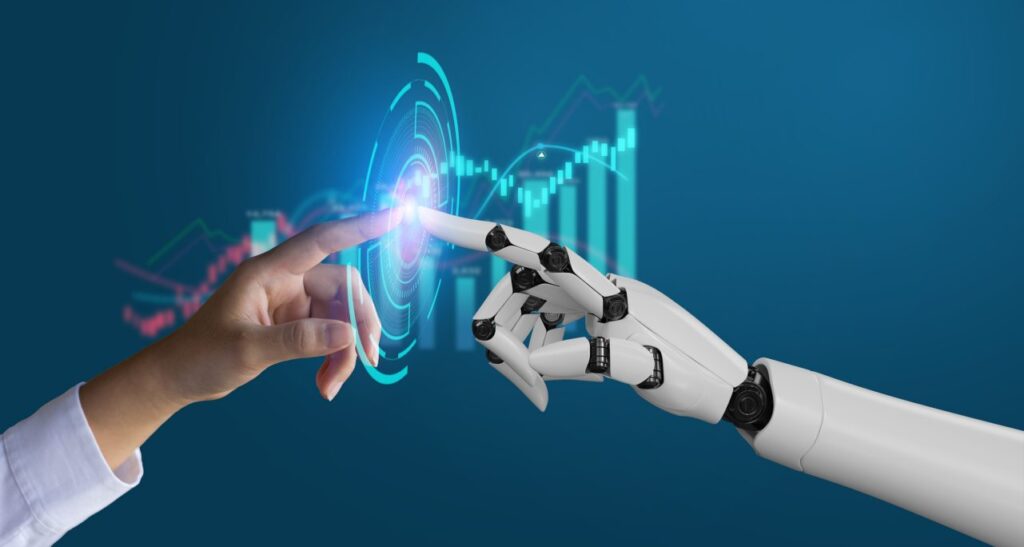Automation and AI: Automation and artificial intelligence (AI) are rapidly transforming the global workforce, reshaping industries, and redefining the nature of work itself. As these technologies advance, they bring both opportunities and challenges, necessitating a proactive approach from businesses, governments, and workers to navigate the evolving employment landscape.
The Impact of Automation and AI on Employment:
Automation and AI have the potential to significantly alter job markets by automating routine tasks and introducing efficiencies across various sectors. A study by the McKinsey Global Institute suggests that up to 50% of current work activities could be automated by 2030, affecting numerous occupations
This shift is particularly evident in industries such as manufacturing, finance, and customer service, where repetitive tasks are prevalent.
However, the impact of Automation and AI is not uniform across all job types. High-skilled workers engaged in non-routine tasks are also susceptible to AI automation, as advanced AI systems become capable of handling complex activities.
This trend underscores the need for workers to adapt and acquire new skills to remain competitive in the changing job market.
Emergence of New Roles and Human-AI Collaboration:
While automation may displace certain jobs, it also creates new opportunities. The integration of AI into various sectors has led to the development of roles that require managing and collaborating with AI systems. For instance, AI can handle customer interactions, allowing human workers to focus on complex problem-solving and personalized customer engagement
Microsoft CEO Satya Nadella emphasizes that Automation and AI will transform knowledge work by automating routine tasks, thereby enabling employees to engage in more strategic activities. He envisions a future where AI agents work alongside humans, augmenting their capabilities and creating new workflows.

Sector-Specific Transformations:
In the finance industry, Automation and AI streamlines operations by automating complex tasks such as predictive analysis, account reconciliation, and financial planning. This automation not only enhances efficiency but also allows professionals to concentrate on strategic decision-making and client relationships
The manufacturing sector is witnessing the rise of smart factories, where AI-powered systems and robots perform tasks that once required human intervention. Companies like Siemens and General Electric have implemented such technologies to enhance precision and productivity. However, this increased reliance on interconnected digital systems also raises concerns about cybersecurity, as evidenced by the significant proportion of cyberattacks targeting smart factories
Challenges and Considerations:
The integration of AI and automation into the workforce presents several challenges. One major concern is the potential for job displacement, particularly in roles involving routine tasks. A McKinsey Global Institute study estimates that by 2030, up to 800 million jobs could be lost to automation globally
This potential displacement necessitates a focus on upskilling and reskilling workers to equip them with the competencies required for emerging roles.
Moreover, the adoption of Automation and AI must be approached with caution, especially in tasks where the cost of failure is high. For example, while AI can handle customer service interactions, its application in emergency response scenarios requires careful consideration due to the complexity and high stakes involve.
The Path Forward: Upskilling and Policy Interventions:
To navigate the transition brought about by AI and automation, a multifaceted approach is essential. Workers must engage in continuous learning to acquire skills in areas such as data analysis, machine learning, and cybersecurity. Educational institutions and training programs play a crucial role in providing accessible pathways for skill development.
Policymakers and business leaders must collaborate to create an environment that supports workforce adaptation. This includes investing in education, implementing policies that encourage lifelong learning, and developing safety nets for workers affected by technological displacement. Proactive measures can help mitigate the adverse effects of automation and ensure that the benefits of AI are equitably distributed.

For News related to Cryptocurrency Click Here
Conclusion:
Automation and AI are undeniably reshaping the future of work, bringing both opportunities for innovation and challenges related to employment. The key to harnessing the potential of these technologies lies in embracing change through upskilling, fostering human-AI collaboration, and implementing thoughtful policies that address the complexities of this transformation. By doing so, society can navigate the evolving landscape of work and ensure a future where technology enhances human potential rather than diminishes it.


